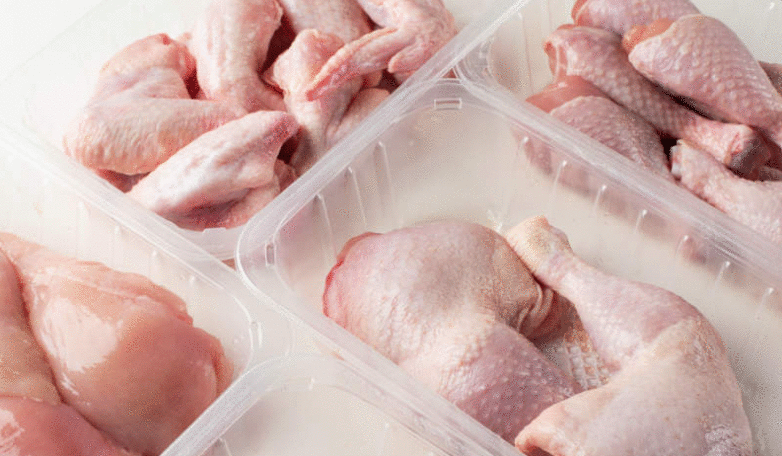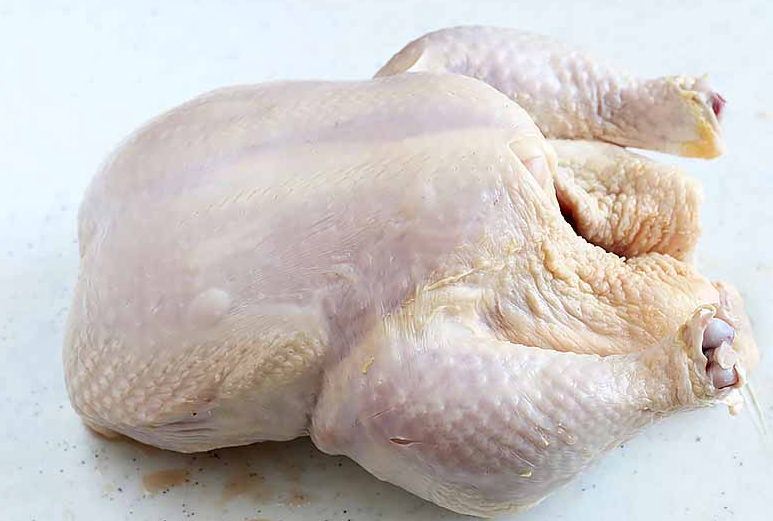How Long Does Chicken Last in the Refrigerator?
When storing raw chicken in the refrigerator, it’s crucial to keep it at a consistent temperature of 40°F (4°C) or below to prevent the growth of harmful bacteria. Place the chicken in the coldest part of the fridge, typically the bottom shelf, to ensure proper cooling.
If the chicken is purchased in a plastic-wrapped package from the store, you can store it in its original packaging. However, if you plan to store it for longer or if the packaging is damaged, transfer the chicken to an airtight container or resealable plastic bag.
To further extend the shelf life of raw chicken, you can consider marinating it before refrigerating. Marinating not only adds flavor but also helps tenderize the meat. Be sure to discard any leftover marinade that has come into contact with raw chicken to avoid cross-contamination.
Storing Cooked Chicken in the Fridge:
After cooking chicken, allow it to cool completely before storing it in the refrigerator. Hot or warm food can raise the temperature inside the fridge, potentially compromising the safety of other perishable foods.
Transfer the cooked chicken to a clean, airtight container or wrap it tightly in aluminum foil or plastic wrap. Properly stored, cooked chicken can last for 3-4 days in the fridge. If you have a large batch of cooked chicken that you won’t be able to consume within this timeframe, consider freezing the leftovers for later use.
Storing Raw and Cooked Chicken in the Freezer:
Freezing is an excellent way to extend the shelf life of both raw and cooked chicken. However, proper packaging is key to maintaining quality and preventing freezer burn.
For raw chicken, remove it from its original packaging and repackage it in airtight containers, heavy-duty freezer bags, or wrap it tightly in heavy-duty aluminum foil or freezer paper. Make sure to remove as much air as possible from the packaging to prevent freezer burn.
Cooked chicken should also be packaged tightly to prevent air exposure. You can use the same methods as with raw chicken, such as airtight containers, heavy-duty freezer bags, or aluminum foil. Label the packages with the date of freezing to keep track of freshness.
When freezing chicken, it’s essential to use a freezer that maintains a consistent temperature of 0°F (-18°C) or below. Properly frozen raw chicken can last up to 9 months, while cooked chicken can maintain quality for 2-6 months in the freezer.
What Are the Signs That Raw Chicken Has Gone Bad?
Recognizing the signs of spoiled raw chicken is crucial for food safety. Here are some indicators that raw chicken has gone bad:
- Foul Odor: Fresh raw chicken should have a neutral odor or a slightly sweet smell. If the chicken emits a strong, unpleasant odor similar to ammonia or sulfur, it’s likely spoiled.
- Change in Color: Fresh raw chicken typically has a pinkish hue. If you notice any gray or greenish discoloration, especially around the edges or areas where the chicken comes into contact with packaging, it could indicate spoilage.
- Slimy Texture: Fresh raw chicken should feel moist but not slimy or sticky to the touch. If the surface of the chicken feels slippery or slimy, it’s a sign that bacteria have started to multiply, indicating spoilage.
- Unusual Appearance: Inspect the chicken closely for any unusual growths, mold, or unusual textures on the surface. These are clear signs that the chicken has gone bad and should be discarded.
- Excessive Moisture: If there is an excessive amount of liquid pooling in the packaging or around the chicken, it could be a sign of spoilage. This liquid, often referred to as “purge,” is released as bacteria break down the meat.
If you notice any of these signs, it’s best to err on the side of caution and discard the raw chicken. Consuming spoiled chicken can lead to foodborne illnesses, so it’s important to prioritize food safety. When in doubt, trust your senses and avoid consuming chicken that appears or smells off.
What Do the Dates on the Packaging Mean?
The dates on chicken packaging typically include three types: “sell-by,” “use-by,” and “best-by.” Each of these dates serves a different purpose:
- Sell-By Date: The “sell-by” date is provided to retailers as a guide for how long they should display the product for sale. It indicates the last date by which the store should sell the chicken to ensure the consumer has enough time to use it while it’s still at its best quality. It’s important to note that the chicken is still safe to consume for a period of time after the sell-by date if it has been stored properly.
- Use-By Date: The “use-by” date is the date recommended by the manufacturer for the consumer to use the product for the best quality. Consuming the chicken before the use-by date ensures optimal freshness and flavor. However, it’s important to understand that this date is not necessarily a safety deadline. As long as the chicken has been stored properly, it may still be safe to consume for a short period after the use-by date, but the quality may begin to decline.
- Best-By Date: Similar to the use-by date, the “best-by” date indicates the date by which the chicken is expected to be at its peak quality in terms of flavor, texture, and overall freshness. Consuming the chicken before this date ensures the best eating experience, but it does not necessarily mean that the chicken will be unsafe to eat after this date, provided it has been stored properly.
It’s important to remember that these dates are provided as guidelines for quality, not safety. Proper storage and handling practices are key to maintaining the safety and quality of chicken beyond these dates. Always use your judgment and inspect the chicken for signs of spoilage before consuming it, regardless of the date on the packaging.
How to Choose and Store Chicken So It Stays Fresh
Choosing and storing chicken properly is essential for maintaining its freshness and ensuring food safety. Here are some tips to help you select and store chicken effectively:
Choosing Chicken:
- Appearance: Look for chicken with a fresh, pinkish color. Avoid chicken with any discoloration, such as gray or greenish spots, which could indicate spoilage.
- Texture: The chicken should feel firm to the touch and should not have any excessive moisture or sliminess on the surface. Avoid chicken that feels slimy or sticky.
- Smell: Fresh chicken should have a neutral odor or a slightly sweet smell. Avoid chicken with a strong, unpleasant odor, as it could be a sign of spoilage.
- Packaging: Choose chicken that is well-packaged and properly sealed. Avoid packages with tears, leaks, or excessive amounts of liquid, as these could compromise the freshness of the chicken.
Thawing Frozen Chicken:
When you’re ready to use frozen chicken, it’s best to thaw it safely in the refrigerator. Allow ample time for the chicken to thaw completely, as this slow method helps maintain its quality and safety. Alternatively, you can thaw chicken in cold water or in the microwave if you’re short on time, but be sure to cook it immediately afterward.
By following these guidelines for storing chicken in the fridge and freezer, you can ensure both safety and quality, allowing you to enjoy delicious chicken dishes whenever you please.

